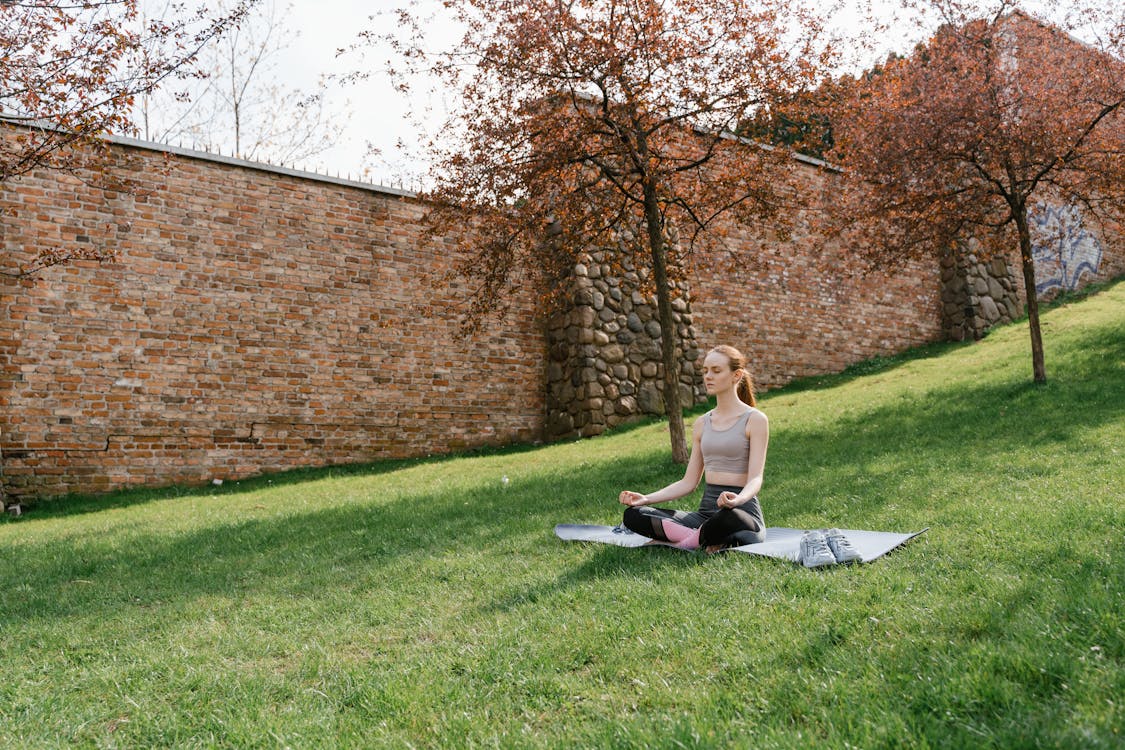Best Exercises And Yoga Poses For A Healthy Lifestyle
1. Pelvic Tilts
- Picture yourself adding a set of pelvic tilts to your exercise routine or during therapy. As you start these tilts, the careful movements become a way to explore how your lower back is doing.
- This starting point works like a quick test, giving you immediate feedback on how your lumbar region feels—whether it’s uncomfortable, stiff, or possibly painful.
- In a real-life scenario, think about someone dealing with occasional lower back discomfort seeking advice during a therapy session. The therapist smartly includes pelvic tilts in the evaluation. While the person does these movements, the therapist closely watches for signs of strain, any limits in movement, or if there’s any discomfort.

2. Downward Facing Dogs
- Doing the downward-facing dog yoga pose is like giving your body a double boost – it makes you more flexible and stronger at the same time.
- Now, let’s talk about someone like Sam, who loves running but often feels tight in the hamstrings and shoulders. Sam decides to include the downward-facing dog in the routine. Doing this pose helps Sam stretch those hamstrings, gradually getting rid of that tight feeling from running.
- At the same time, the stretch in the shoulders is a game-changer for Sam, who spends lots of time sitting at a computer.
Read Also:
Pregnancy: Signs, Symptoms, Overview, Health Tips You Should Know
3. Leg Lunges
- Imagine you’re in a workout, doing the straight-leg lunge. Step forward with one leg, extending the other straight back, and you’ll feel a good stretch in your hamstrings and lower back.
- This intentional movement not only gives you a good stretch but also gets your muscles working together, making you stronger.
- Now, think about someone like Jake, who loves running but often feels tightness in his lower back. To address this and improve his flexibility, core strength, and balance, Jake adds straight-leg lunges to his workout routine. With each lunge, he feels a nice stretch in his hamstrings, easing the tightness from his runs.
4. Practise small movements
- Participating in intentional and unhurried motions while pairing them with deep, purposeful breaths serves a twofold objective. It not only boosts blood circulation, gradually warming up the muscles, but also transforms the static posture into a powerful means of developing strength.
- Each unhurried transition between poses becomes a deliberate journey that acts as a catalyst for increased blood circulation.
- This deliberate approach facilitates a heightened flow to the engaged muscles. The synchronized deep breaths amplify this effect, infusing the bloodstream with oxygen, and energizing the muscles from within.
Read Also:
Way To Improve Your Mental Health And Become Best Version Of Yourself
5 . Legs-Up-the-Wall Pose
- Trying out the Legs-Up-the-Wall Pose involves a purposeful routine to help you relax and recharge.
- Now, let’s look at a real-life example with Emma, a hardworking professional dealing with the daily stresses of her job. At the end of her busy workday, Emma includes the Legs-Up-the-Wall Pose in her relaxation routine.
- Seated beside the wall with her legs up, she creates a soothing inversion that has a calming effect on her body and mind. The wall becomes a reliable support for her lower body, while the floor keeps her upper body grounded.
6. Tree Pose, or Vrikshasana
- Trying out the Tree Pose, also called Vrikshasana, is like taking a journey that involves both your body and mind. Imagine standing tall on one leg, with the other foot gently resting against the inner thigh.
- Your arms stretch overhead, like the branches of a tree. Here’s a practical example with Emma, a committed yoga enthusiast aiming for overall well-being. Making the Tree Pose a regular part of her routine becomes a key element of her practice.
- As Emma takes on the pose, she feels her thigh and calf muscles working, gradually getting stronger. Balancing on one leg requires focus, improving the strength of her torso and groin over time.

7. Downward Facing Dog
- The Downward Facing Dog, or Adho Mukha Śvānāsana in yoga, is like making an upside-down “V” with your body.
- It’s more than just a stretch; it’s a key to feeling good all over. Picture yourself in a yoga class, joining Jane, who loves how it makes her feel.
- As Jane gently moves into the Downward Facing Dog, her body shapes that special “V.” This intentional move brings a great sense of relief, especially for her hamstrings and calves. The pose is like a remedy, easing away the tension that builds up during a busy day.
Read Also:
Quick and Healthy Breakfast Ideas for a Busy Morning
8. Child’s Pose
- The Child’s Pose is a basic yoga stretch that carefully targets key areas like the back, hips, thighs, and ankles. Being good at this pose not only helps with back aches but also eases stomach discomfort. Besides its physical benefits, the Child’s Pose has a calming effect on the mind, making it easier to sleep better.
- Imagine joining a yoga class with Mark, a regular guy looking for some peace from his busy life. As Mark eases into the Child’s Pose, he feels a gentle stretch on his back, a release of tension in his hips and thighs, and a calming effect on his ankles.
- This slow and deliberate movement becomes a safe space for Mark, giving him a moment to relax and ease the stress of the day.
9. Chair Pose
- Chair Pose, also called Kursiasana, starts with your legs a bit apart and arms reaching up. Breathe in deeply as you bend your knees, like sitting on an imaginary chair. Keep your hands straight and take intentional breaths.
- Go back to the starting position slowly as you exhale. This pose is known for making your legs and arms stronger, giving a boost to both your body and mind.
- Now, imagine being in a yoga class with Lisa, a fitness fan aiming for strength and energy. As Lisa smoothly does the Chair Pose, her legs bend gracefully, imitating sitting in an unseen chair.
10. Seated Forward Bend
- The Seated Forward Bend, also called Paschimottanasana, starts with sitting up, making sure your back is straight and toes point outward.
- Inhale, lifting your hands up, and exhale as you slowly lower your hands, reaching for your toes.
- Place your hands where comfortable, stay in the position without forcing, and release slowly while stretching your spine. This pose not only lengthens the spine but also strengthens the pelvis.
11. Low Plank
- Low Plank, or Chaturanga Dandasana, isn’t as easy as it might look. When you do this pose, making sure your core is engaged is super important to keep your body stable as you lower it down and lift it back up.
- Now, think about being in a fitness class with Sarah, someone who wants to get stronger and more stable. As Sarah takes on the challenge of Low Plank, she’s figuring out how to keep her core steady as she lowers and lifts herself up.
- It’s not just about moving your body; it’s also about paying attention to different muscle groups. For Sarah, Low Plank is more than just a way to work out. It becomes a thing that helps her get stronger not only in her core but also in her arms and chest.





